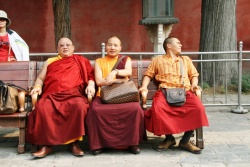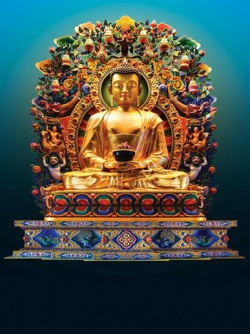The Buddha's Daily Routine
An Overview
After the Buddha’s Enlightenment,
He endeavoured his best to enlighten others and liberate them from the ills of life. Buddha considered the most energetic and the most active religious teacher that ever lived;
Buddha’s day is occupied with His religious activities except when He has to Attend to His own physical needs;
Buddha was methodical and systematic in the performance of His daily activities; Buddha’s inner life was one of meditation and experiencing of Nibbanic bliss while His outer life was one of selfless service for the moral upliftment for the world.
Buddha’s Day Was Divided Into 5 Sessions
1. The Forenoon Session (6a.m. – 12 noon)
Spiritual Assistance to all Beings; As a rule, He went in search of the Vicious and the Impure; e.g. Anguilimala, and the Wicked Demon Alavaka. The Pure and Virtuous came in search of Him, e.g. Visakha, Anathapindika ‘the generous millionaire’ and Intellectual Sariputta and Moggallana came up to Him for Spiritual Guidance.
Immediately after Lunch
2. The Afternoon Session (12 noon – 6 p.m.)
Buddha takes a seat in the Monastery.
Bhikkhus assemble to listen to Dhamma. Some approach Him for suitable objects of meditation, others retire to their cells.
After Discourse, He retires to His Perfumed Chamber to rest.
Attains to the Ecstasy of Great Compassion, surveys the World with His Divine Eye, provides spiritual advice to Bhikkhus, admonishes the erring disciples and retires to His Chamber.
Evening
Lay followers flock to Him to hear the Dhamma. Buddha preaches for one hour. As a rule, Buddha converts others through homely illustrations and parables, appealing more to the intellect than to emotion.
Only on rare occasions as in the case of Anguilimala and Khema did the Buddha resort to His Psychic Powers to effect a change of Heart in His Listeners.
3. The First Watch (6 p.m. – 10 p.m.)
Exclusively reserved for instructions to the Bhikkhus :- Questions on the intricacies of the Dhamma; Suitable objects of meditation; Clarification of doubts.
4. The Middle Watch (10 p.m. – 2 a.m.)
Celestial Beings such as Devas and Brahmas question Him on the intricacies of the Dhamma. Several discourses and answers given to their queries recorded in Samyutta Nikaya.
5. The Last Watch (2.a.m. – 6 a.m.)
The wee hours of the morning comprise of :-
2-3 a.m. – Paces, as a mild form of exercise; 3-4 a.m. – Sleeps mindfully on the right side; 4-5 a.m. – Attains to the Fruit of Arahantship and enjoys Nibbanic Bliss; 5-6 a.m. – Attains the Ecstasy of Great Compassion radiating thoughts of loving kindness towards all Being and surveys the World with His Buddha Eye to see if He could be of service to any.
Conclusion
Buddha’s teachings appealed both to the masses and the intelligentsia alike;
Buddha’s selfless service for the moral upliftment of the world;
For two hours once in the morning and once at dawn, He pervades the world with thoughts of boundless compassion and loving kindness to bring happiness to millions;
Buddha taught Dhamma;
to lay persons (before 6 p.m.);
to His disciples (6 – 10 p.m.);
to Celestial Beings, Devas and Brahmas (10 – 2 p.m.)
He led a life of voluntary poverty seeking His alms without inconveniencing any, wandering from place to place for 8 months throughout the years preaching His sublime Dhamma.
He worked tirelessly for the good and happiness of all until His 80th year, preferring to traverse the long and tardy way on foot accompanied by His attendant Ananda.
His last words before entering Parinibbana :-
“Transient are all elements of being.
Strive with earnestness.”

